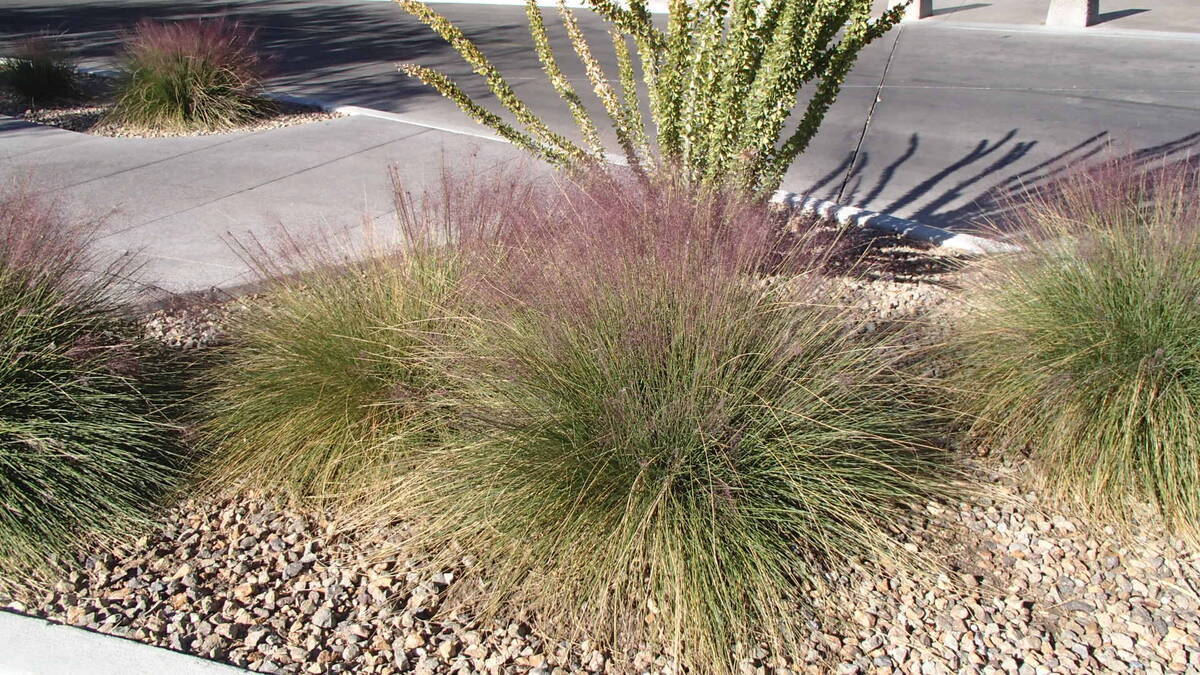Not much is known how kurapia performs in desert climate
This is a continuing discussion regarding kurapia as a replacement for lawn grasses. Kurapia is not a grass but a low-growing, herbaceous, perennial ground cover (shrub) and is considered a weed in grass lawns.
Kurapia has worked well in covering highway and freeway shoulders, rooftops, public utility areas, commercial properties and solar farm landscapes. But not much is known how it performs in a desert climate.
It is not a total replacement for functional turfgrass like sports fields. Remember that visual replacement for lawn grasses does not infer tolerance to wear and play. How much wear your lawn receives should be considered when replacing it with a ground cover of any type.
I received the following information about locally grown kurapia from a local sod company that supplies lawn grass to the Las Vegas Valley.
“We at Valley Sod started investigating Kurapia about two years ago and planted an acre of the material at our farm in Sandy Valley. During this time, we have learned how the plant grows and responds to different temperatures and soil conditions.
“The plants have been exposed to temperatures from 18 to 116 degrees at the farm. The plants did not go dormant (or turn brown) within any of those extremes. In fact, it prefers the heat over the cold and has an active growing season from March till the end of October. It does handle some shade. In full sun it has a very small leaf whereby in shade the leaf is larger. Kurapia can be mowed, occasionally, if wished, to remove the flowers to make it appear more like a turfgrass rather than a (flowering) ground cover.
“Valley Sod became a licensed grower of Kurapia 2 years ago. We foresee Kurapia as a great replacement for natural turf because of its drought tolerance and preference for sub-surface irrigation.”
If this kind of replacement interests you, contact Mike@valleysod.com.
Q: I have a bottle tree that is about 15 years old and has done very well until this summer. The lower branches are drooping, and the leaves on some of the branches are turning yellow and appear to be dying. I water the tree once a week for two hours during the summer. I use a soaker hose.
A: After 15 years and your tree reaching that size with that watering frequency, I don’t think it is a watering frequency issue. It might be related to a watering distribution issue if the water has not been applied over a large area under the tree for a few years. Trees get bigger, and we must add emitters to them and expand the irrigated area as they get older.
Look to see if the water is applied close to the trunk of the tree. I would encourage you to apply it to at least halfway under the tree canopy. The University of Arizona extension people encourage applying water to the entire area under the tree canopy, but I think halfway is far enough for larger trees like yours as long as the tree is stable in the ground.
When a tree is damaged (leaf scorch or dying limbs) because of water issues, we see the worst damage on the side facing west or south. In some pine trees, entire branches may die while the rest of the tree is green. If you have not changed where the water is applied for many years, then this can be the problem. But this type of damage is water-related.
What to do? Move drip emitters under the tree canopy (or where water is distributed) so they are about 18 inches apart and start at about 12 inches from the trunk. Add drip emitters to the area under the tree canopy so that water is distributed to at least half the area under the tree.
I don’t think it is a disease or insect problem. I have used a spiral of drip tubing under established trees with very good luck when grass is removed. The time remains the same. I just make sure there are enough emitters in the spiral so the tree is not stressed in that time period.
Q: I have a eucalyptus tree planted in a container. We are renting and I was using it because it smelled so good. This summer the top started to die and now the tree is dead. What did I do wrong?
A: The tree grew too big for the container and eventually outgrew it. This is why the top is dying. The roots cannot take up enough water to support a large amount of top growth. I think it was struggling with the amount of water it was given.
Either remove the tree and plant something smaller in that container that smells good or start the tree all over again. When it gets large again, replace it.
Late summer is the time to either take stem cuttings from that tree and root them, air layer them or buy a replacement plant. Marcottage, or air layering, is more successful on some trees than taking stem cuttings. There are air layering balls available to help you in your marcottage efforts.
Q: Can I cut back my tomatoes and get them to continue to produce fruit now that it is cooler?
A: You have the right idea. Tomato plants produce fruit at temperatures from about 60 to 95 degrees Fahrenheit. That happens in the garden during the spring and the fall.
They will produce fruit at temperatures colder than this, but it takes longer for the fruit to mature. Tomatoes are warm-season vegetables, preferring warm weather to cooler temperatures, but stop producing fruit from flowers at daytime temperatures starting around 95 degrees.
The best plant varieties for fall pruning are the indeterminate types rather than determinate varieties. Both may work but are more successful if the variety is a trailing type (usually indeterminate) rather than a squatty bush type (usually determinate).
Tomato plants planted in the spring have an established root system, so they grow back and flower sooner than plants that are planted in late summer for a fall crop. You can plant tomatoes in the late summer or early fall, but it takes longer to get fruit.
Cut off enough to encourage regrowth and flowering. Usually, about 3 inches is enough and do this at a joint or node. Flowering occurs on new growth sprouting a few inches below the cuts.
Timing the cuts are critical and the results can be hit or miss depending on the fall weather but worth a try, particularly if your variety is an early type. After cutting, apply a mineral fertilizer or tomato food to the plant and water it.
Liquid sprays get results faster than fertilizers applied to the soil and are worth the extra work. But either fertilizer application works.
Q: I want a small desert tree for the landscape surrounding my one-story home. I have a hybrid septic tank in the front yard, and the roots of my previous tree may have found it.
A: You will know if the plant’s roots have tapped into a septic tank or leach field; it will be growing like gangbusters without much input from you. Whichever you decide to plant, always plant woody-type plants away from a septic tank and leach fields at a distance equal to their mature height.
When buying plants, pay attention to their mature height. Use only very short nonwoody plants or grasses on top of leach fields and septic tanks. You do not want the roots of any woody plants plugging up these places.
Small desert plants or low-water-use plants from arid regions include Texas mountain laurel, desert willow and vitex or even larger shrubs like the big Texas rangers. These shrubs can be pruned into small trees.
I don’t like to recommend specific plants because of plant availability issues. Selection is better now because of online nurseries but online plants must be bought starting in about September for a January or February delivery and planting.
Q: Why does my lime fruit taste like an orange?
A: Limes trees are very tender when it comes to winter cold temperatures. All citrus trees are grafted to a cold-hardy rootstock.
Some oranges tolerate winter cold temperatures and others do not. Winter-tender citrus trees, such as limes, are grafted onto cold hardy citrus which is oftentimes an orange.
Because it freezes in our climate, tender citrus intended for the Las Vegas market is selected with very cold tolerant rootstocks grafted onto them. Oftentimes this rootstock is a cold hardy orange such as sour orange or trifoliate orange. If the tender top dies due to freezing weather, then at least the rootstock survives and suckers.
Lime trees not grafted to a hardy rootstock or grown from seed on their own roots might all die with freezing temperatures. If the rootstock survives and the top dies, then the rootstock frequently produces suckers.
Most homeowners don’t notice, and they keep the sucker and rootstock tree alive. The orange sucker starts flowering in a few years and this orange sucker produces orange fruit when you planted a lime tree. The lime is now an orange.
Bob Morris is a horticulture expert and professor emeritus of the University of Nevada, Las Vegas. Visit his blog at xtremehorticulture.blogspot.com. Send questions to Extremehort@aol.com.























